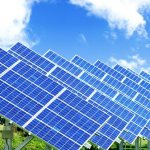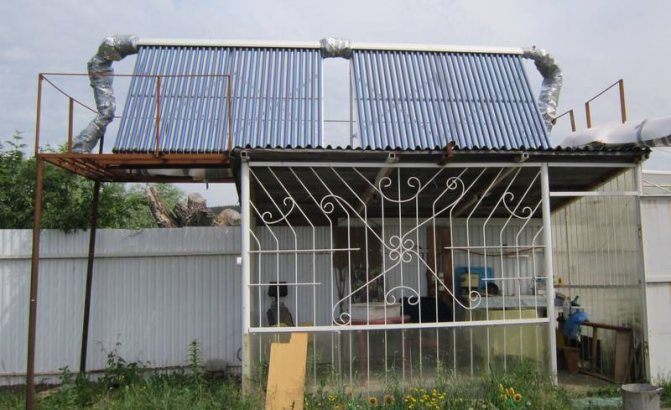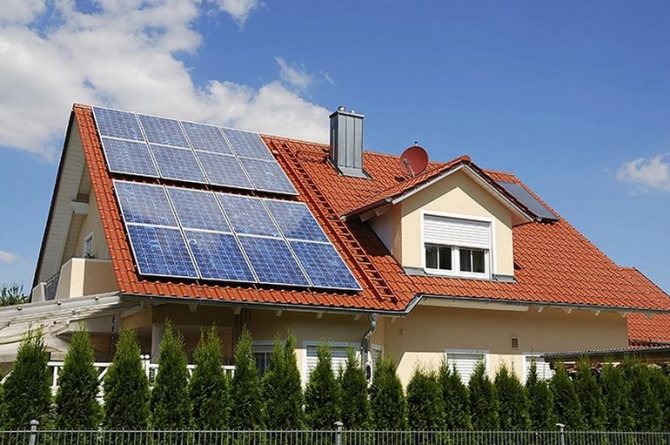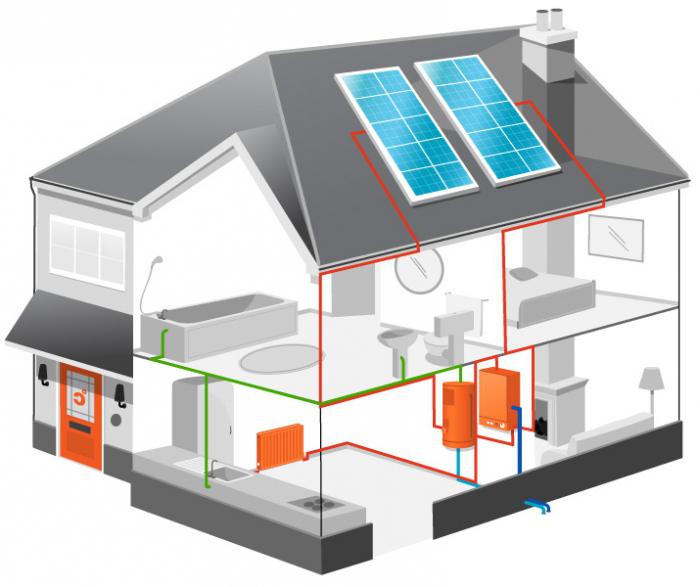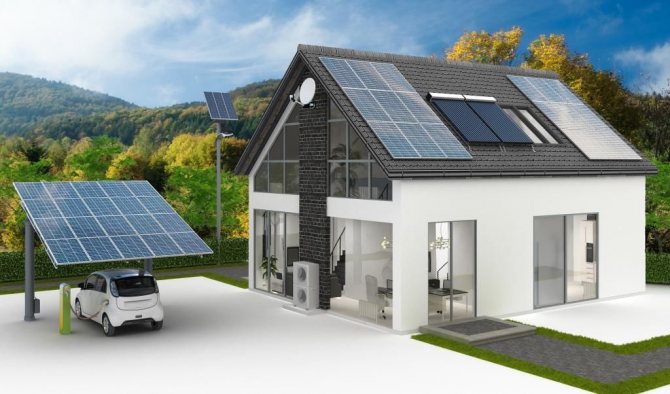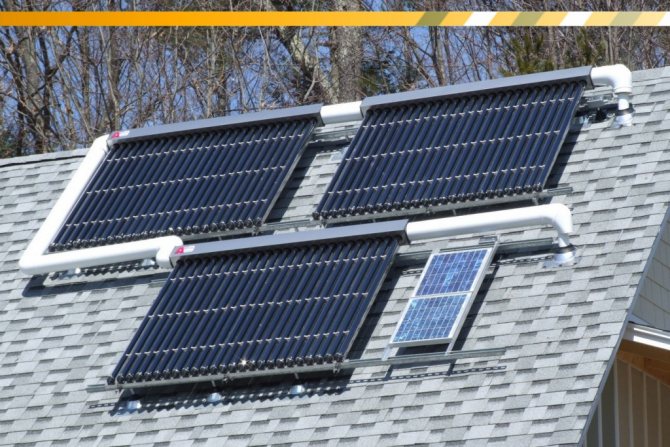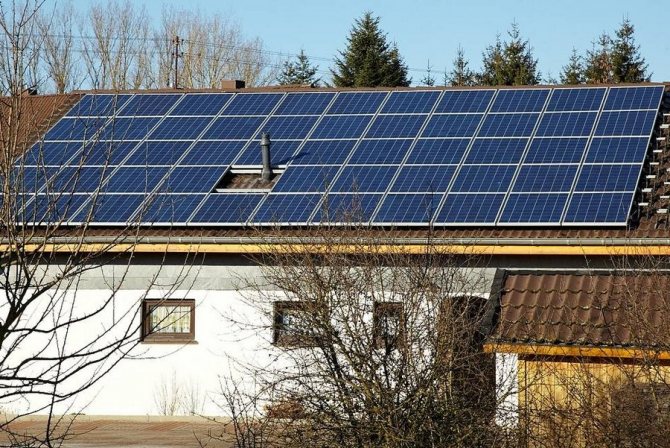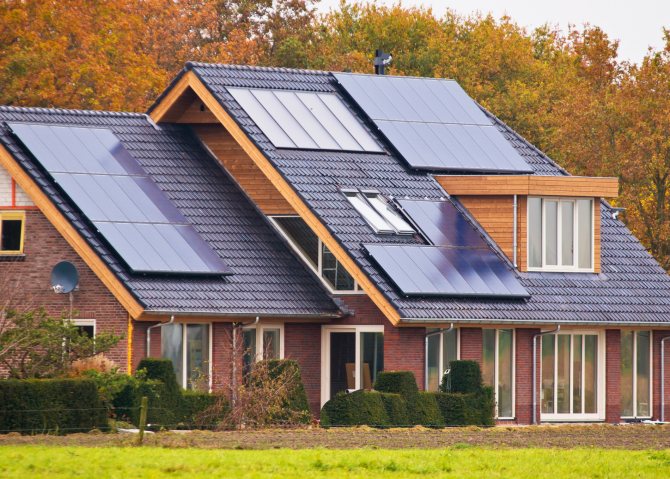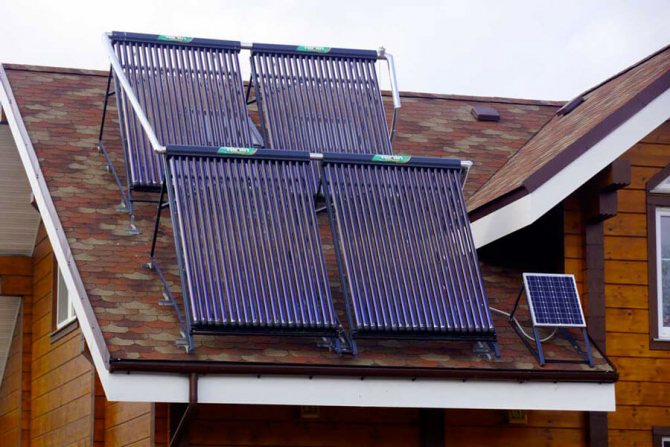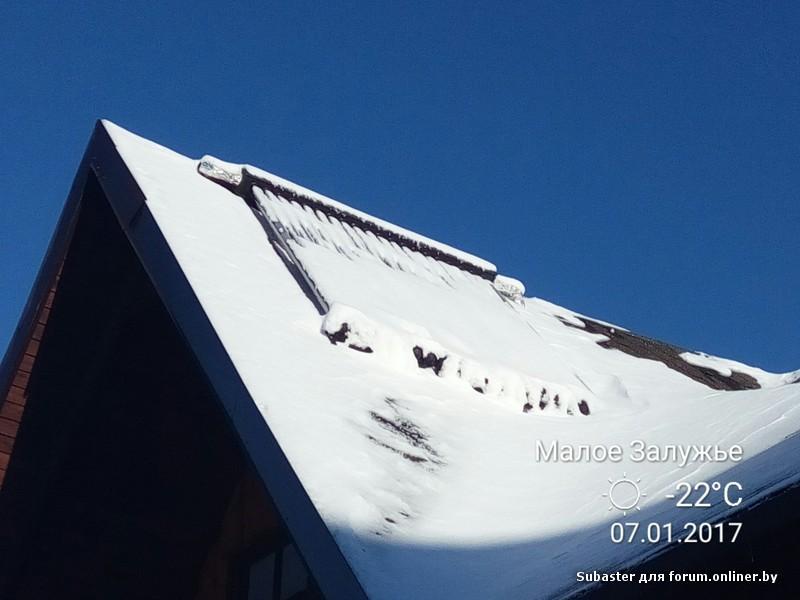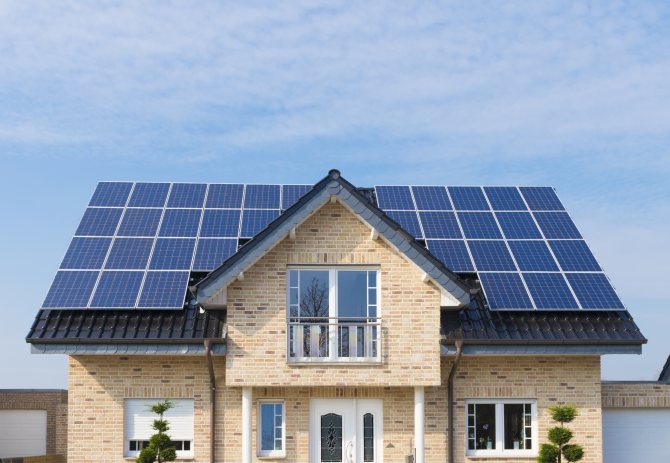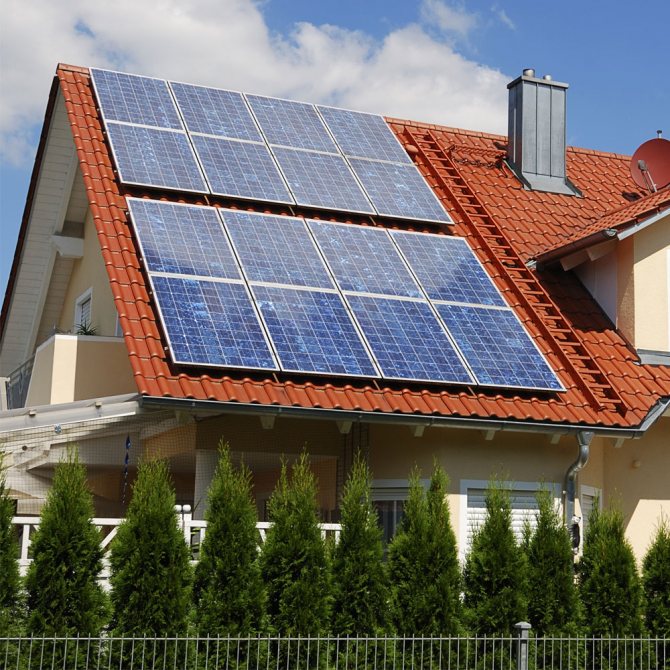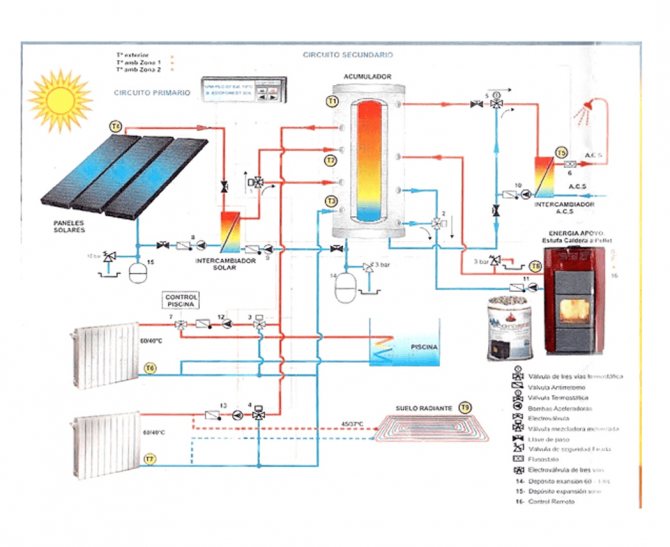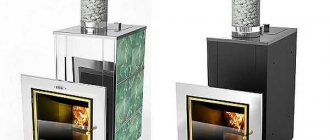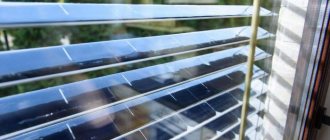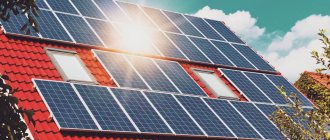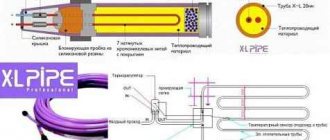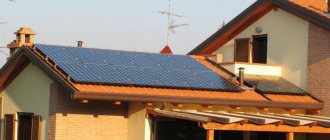Benefits and features of real use
No one will give a better assessment than those who have tried the technology for themselves. Are solar panel users satisfied with the solution? Find out what netizens are saying about this.
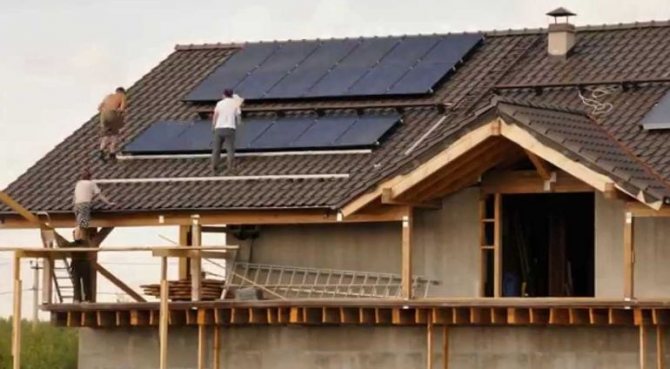
Grid inverters used to operate batteries do not require batteries, which are the weak link in alternative power supplies. Electricity is generated in real time and immediately enters the grid. Theoretical calculations fully correspond to reality, which has been verified in practice. This allows you to plan the cost of purchasing batteries.
However, it is important to make allowances for cloudiness.
Which solar panels of Ukrainian production are better
The solar panel can pay for itself after several years, depending on the weather conditions. This installation does not require any permits. When purchasing models, you should pay attention not only to foreign companies, but also to the panels of Ukrainian and Russian production. The most popular companies are Kvazar, Ray Trade, Rentechno, Star Energy, Green System.
The advantages of a domestic purchase:
- The price corresponds to the quality;
- You can save on electricity by using panels for buildings for various purposes;
- Ukrainian manufacturers offer a wide range of products;
- Fast and inexpensive delivery.
There are many candidates among Ukrainian manufacturers who can compete with foreign companies in terms of quality. Most of all, consumers are pleased with the availability of a domestic product. Before buying, it is better to consult with a specialist and study in more detail the features of solar panels.
What sellers of solar panels are silent about
If you walk through the forums and reviews, you can find such warnings from the happy owners of solar panels.
- Panels require a grid-inverter for operation: when purchasing panels, you need to match the voltage of the inverter and panels for compatibility.
For example, to operate two panels, each of 100 watts, an inverter of 300-500 watts is required.
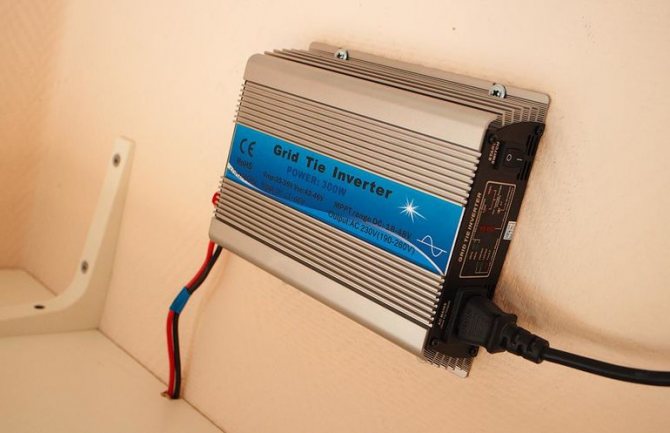

Chinese and usually quite high-quality inverters, nevertheless, often indicate a power that does not correspond to reality on the case. Be careful during the purchase and check the details. The device operates in the presence of mains voltage, therefore it cannot be a backup power source. If electricity is not consumed immediately, it is fed back to the grid. At the same time, the counter turns forward and backward. This is unusual and overlooked by many counters. There is a risk of paying back energy
It is important to take into account the type of meter and include the cost of replacing it in the calculations. If your area is often cloudy, it is important to take it into account and equate it with shade. It is important to consider the time and effort required to clean the panels, especially in winter to remove snow.
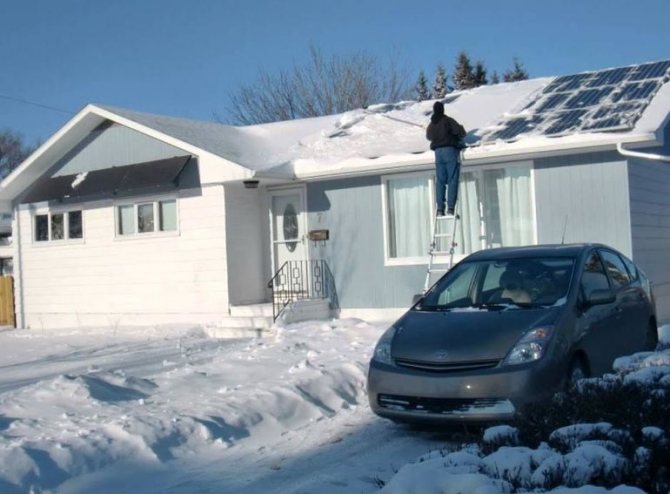

The main conclusion of those who purchased panels in our country is that so far it is too expensive a pleasure, which should be regarded as a hobby.
Experience of using solar vacuum collectors from other countries
Sub ** r, Belarus
From October until the New Year, the water in the storage tank did not heat up more than 16 degrees, the collector was blown out with snow, they say that it was installed incorrectly. On January 7, it was -32 outside, but the sensors and the controller showed that by 12 noon the water warmed up to +30. Probably, I installed a few pipes, it is better to install 30-40 on a tank of 200 liters.
I collected everything myself, maybe there are miscalculations, but I think that equipment sellers are cunning with efficiency. While this is more of an experiment for me, the price and payback period are not entirely encouraging.


9eb8830d456fc3e23a515ef9402c382a.jpe
I *** rs
We decided to start selling solar collectors and test the vacuum one. We put it to a colleague in a private house. Chosen on the basis of the need - for hot water, with a separate tank, which is installed inside the house. 135 liter tank, one manifold for 12 pipes 58 mm in diameter and 1800 mm in length.
The "owner" is pleased, since the tank, manifold, controller and control unit were given to him for free. The employee bought the rest of the consumables himself.
From July to mid-October, the collector heated one tank per day up to 50 degrees, if it was constantly sunny - 2 tanks. That is, 135 and 270 liters, respectively. In winter, heating is very efficient, judging by the number of pump activations for pumping. We made a mistake with the installation - a large length of pipes (about 30 meters), which means large losses. And the installation of the sensor is incorrect - they were installed in the manifold, not in the tank. In general, ideally, you need to set two in order to correlate the data through the controller.
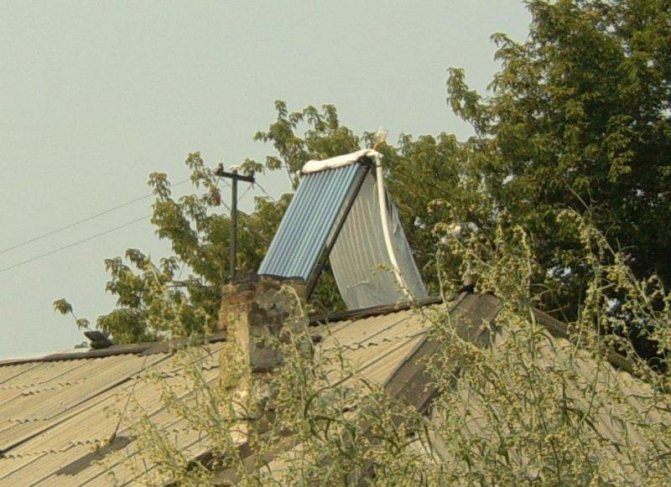

Dmitry, Belarus (sent from comments)
We installed two vacuum collectors with 24 tubes each not far from the house. Not enough for heating, but enough for hot water. Water is just boiling water. The installers helped to connect it to the heating system for heating water, and then to the required 70 degrees with a gas boiler.
Savings are evident, gas consumption fell by 30-40%. The winter will pass, we will calculate the payback. The only problem was that it was set at a 45 degree angle. Raised to a position closer to the vertical - productivity has increased. But the heating temperature depends on the cloudiness. Fogs in the morning also affect - on such days, the tank warms up more slowly. And so, quite happy.
Advantages and disadvantages of this technology
Any real-life system has its pros and cons, and a solar power plant also has them. The advantages include the following factors:
- Autonomy. Your quality of life will cease to depend on the health of state power grids. It's no secret that periodic power outages are pretty nerve-racking. And if you work at home, then you just need an autonomous power supply, otherwise the lack of electricity can lead not only to moral, but also to material costs.
- Variability. The possibility of a phased increase in power. It is not necessary to convert the entire house to solar energy at once. For starters, one panel and a car battery will be enough, from which you can easily power several LED lights or street lights. As an experiment and to gain the necessary experience, you can start with a solar-powered fountain or an electrifying kitchen. By gradually increasing the power of the system, you can move on to more serious devices, for example, connect fans in the summer and a small heater in the winter. And having thoroughly studied the topic, you can start global projects, transfer heating to solar energy or power the greenhouse.
- Environmental Safety. In the process of generating electrical energy, no harmful elements are released into the environment, and when disposing of failed components, no harmful compounds are formed.
- Legality. You do not need any additional permits to purchase and install solar panels on your roof or an area adjacent to the house.
- Durability. If the elements in the panels are of high quality and connected correctly, and the batteries themselves are installed according to all the rules, the system will serve you for more than a decade.
Now about the disadvantages:
Given the current situation with carbon energy carriers, it is not a question to switch to alternative energy sources or not. The main thing here is to decide which of the renewable resources is right for you.If the information from this article was useful to you, share it with your friends and do not forget to subscribe to our blog, there is still a lot of interesting things ahead.
The growing popularity of solar energy
If you search on the Internet, you will find quite a few positive and even rave reviews about solar panels from those who have already installed them. Their popularity is growing for a number of reasons. For example, the cost of using the same gas or coal is constantly growing, and solar power plants are an excellent reserve of energy for houses in small towns, where electricity is often cut off. Solar energy is the best solution for areas where there are no power lines nearby, and there is no technical possibility to install them.
On an industrial scale, the production of such installations is established in countries such as:
- Germany;
- USA;
- China;
- Ukraine;
- Russia.
About technology
It would be wrong to say that this is a new technology. In 1960, astronauts used solar-powered satellites; during World War II, many such batteries were installed on homes in the United States, allowing them to receive energy from the sun and heat their homes at its expense.
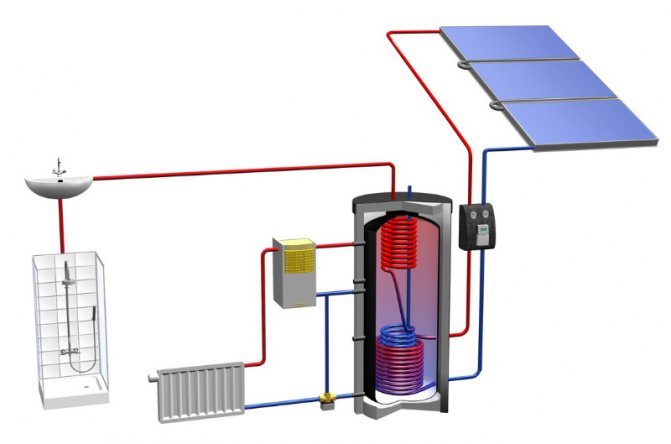

However, it was problematic to introduce the technology everywhere - photovoltaic panels, which are responsible for converting sunlight into electrical energy, are a rather expensive technology. It is cost that is often the key factor in making a decision.


Obviously, in order to make a decision, it is necessary to take into account a combination of factors. Consider the clear benefits of equipping your home with solar panels:
- The energy of the sun is free and inexhaustible.
- The energy of the sun is environmentally friendly.
- There are no greenhouse gas emissions.
By using solar panels, we practically join the "green movement", take the path of protecting the planet and get free and endless energy.
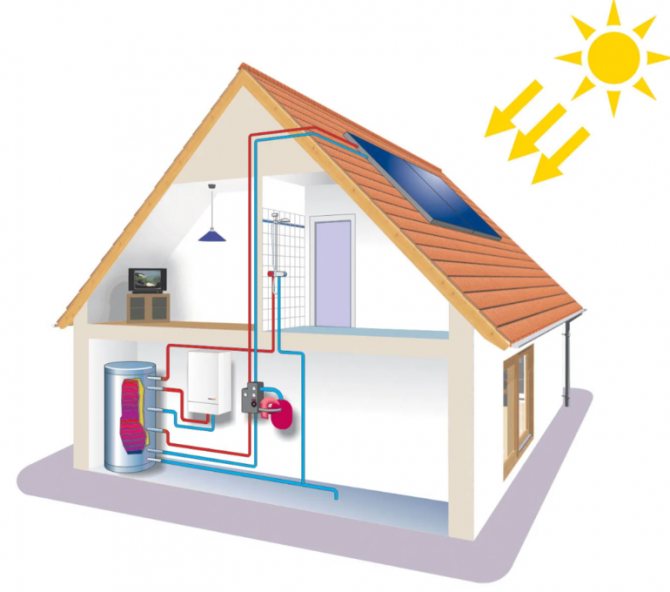

How does a solar battery work? The panel consists of photovoltaic cells connected by a common frame. Each uses a semiconductor material (most often silicon) and an electric field. The semiconductor absorbs the energy of the rays and heats up, releases electrons, directed by the electric field in a certain direction, the flow of electrons forms an electric current. The current through the established contacts is sent to the wires and used for its intended purpose. The current strength depends on the power produced by the photocell.
To increase the efficiency of silicon, impurities are used (atoms of other substances are added to silicon), for example, phosphorus.
In addition, silicon reflects light well, therefore, to reduce losses, the photocells are protected with an anti-reflective coating. And to protect the batteries from mechanical damage, they are covered with glass.
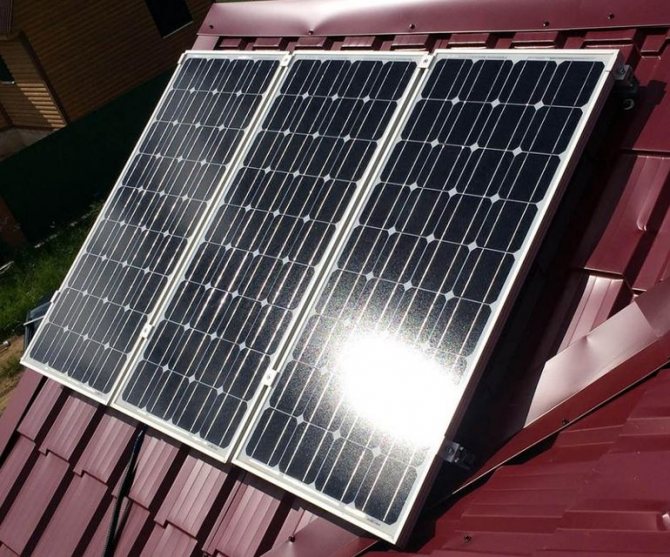

The efficiency of such batteries is rather low - they are able to process only 12-18% of the rays falling on them. The most successful designs achieve an efficiency of 40%.
Components of a solar power plant
Conventionally, two groups of solar cell systems can be distinguished - with small and large panels. In the first case, we are talking about batteries capable of "issuing" up to 24 V... To fully provide the house with electricity, panels of the second type will be required. Consider the design of such systems.
Solar cells
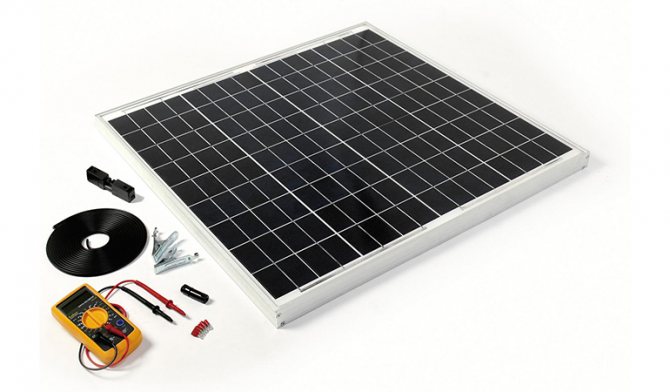

The most important part of a solar power plant is the cells themselves. They are made of a special material that is capable of converting solar energy into electrical energy.
The panel consists of several individual elements that are connected in series and parallel assemblies. When connected in parallel, the output voltage increases, and when connected in series, the output current.
Each solar panel has several basic characteristics to consider when choosing.
| Characteristic | Detailed description |
| Power (W) | It is selected taking into account the level of equipment with electrical appliances. So, a family of three consumes about 5 kWh daily. This means that the total power of the photocells should not be less 1500 watts... There are a number of other nuances that must be taken into account. |
| Voltage (AT) | For a private house, systems that issue 24 V |
| Type of shell | Metal or plastic. The first is heavier, but more durable. |
| Connection mechanism | Connectors or pins. The first option is more practical and reliable, but it costs more. |
Do not forget that you will have to regularly clean the elements from dirt and dust. It is much more convenient to do this if the panels are in a reliable metal frame.
Solar panels can be bought ready-made, but it is much more profitable and more convenient to assemble them yourself. This way you can save a lot. The elements themselves can be ordered online. By connecting them in parallel and in series, you can achieve the required power and voltage. For the frame, you can use aluminum corners and a sheet of glass or transparent plastic.
Remember that plastic can cloud over time, which will reduce the amount of energy being drawn from the panels. Glass is more durable in this regard, but it is less durable.
Controller
The controller distributes the charge between the consumer and the battery. If the power provided by the solar panels is more than the consumed one, then the remainder is used to charge the batteries. If the load power is greater than the elements emit, then the batteries are connected to work.
The controller also ensures that the batteries are properly charged. It is worth choosing it based on the power of solar panels, battery capacity and load size. Modern controllers can tell you all the information about your station via the Internet.
Batteries


Batteries store excess power from solar panels, which allows you to use electricity at night. In addition, if the amount of electricity consumed exceeds the maximum possible production in the panels, the battery is connected.
The most important parameter Battery - capacity. The minimum battery capacity required is the amount of electricity you consume per night. If at night you consume 2 kWh, then the battery must give at least 2 kWh.
The capacity is calculated as follows:
Required capacity = consumption (W / h) / battery voltage (in volts).
If you consume 2 kWh, and the battery voltage is 12 in, then the required capacity is 166 A / h (2000/12).
But Efficiency battery not 100 %, but 70 or even 50 %... In cloudy weather, electricity generation is greatly reduced, so you need to calculate Batterybased on consumption for two days. Then, in case of cloudy weather, you can comfortably wait for sunny days.
Inverter
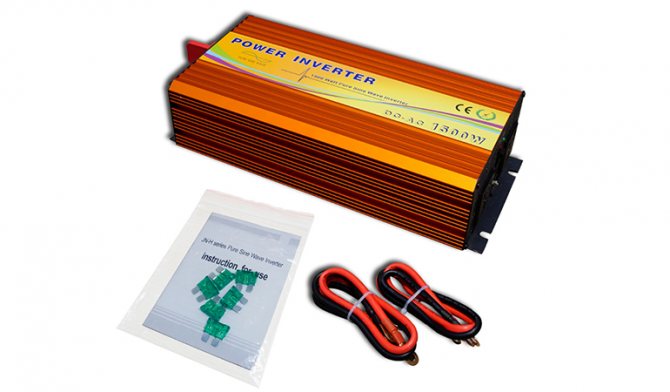

The inverter converts 12 in from the battery in 220 V for the operation of devices. Its main parameter is power. It is calculated from the consumption of electricity by all devices at the same time.
This value must be selected with a margin, since Efficiency this device is far from 100 %... When a load is connected with a total power greater than the inverter is capable of giving, it will simply burn out or go into protection.
There is one caveat when choosing an inverter. Devices with an electric motor (refrigerator, drill, vacuum cleaner, etc.) require a pure sine wave for operation. Therefore, when choosing an inverter, you should pay attention not only to the power, but also to the type of output voltage.
Wiring
Wires connect all the elements together. It is worth choosing them based on the power that flows through them. In this case, a reserve is necessary, since a part of the supplied energy can be lost on the wires.
If the wires are running at their limit, they can get hot, causing a fire.
Solar panels are usually installed on the roof of the house, but if the roof is not well positioned, then they can be installed on the ground using special mounts. In this case, the equipment will be conveniently cleaned from dirt and dust.
The installation direction also plays a big role. It is necessary to find out in which direction the duration of solar panel illumination will be maximum for your region.
Solar panels for home: how they work
In Russia and other countries with cold winters, many doubt the efficiency of such installations, since there is no sun for many days a year, therefore, the accumulated solar energy during the warm season will quickly be wasted during severe frosts.
However, such installations have a sufficiently high power, which ranges from 200 W for one module, they are capable of producing energy throughout the day and are able to catch light even with precipitation or thick clouds. The only negative is a decrease in power in bad weather by about half. But, on the other hand, solar panels have the ability to store energy, which will be given off in case of insufficient sunlight.
The new generation of installations based on amorphous silicon differs from the previous one in that such batteries do not need to be directed into the sun, for their normal operation, an average area will suffice. But they have a significant drawback - a large area must be allocated for their placement. And productivity in northern Russia will be significantly lower than in Crimea or Krasnodar Krai. But at the same time, in the same St. Petersburg, they can still be used with success for a whole year.
99bb6505f517bf2bc42ed72c803598c1.jpe 4e759665bff08246cc552a491745eeb9.jpe


6793705111331a3c99e99d626ef7d14a.jpe
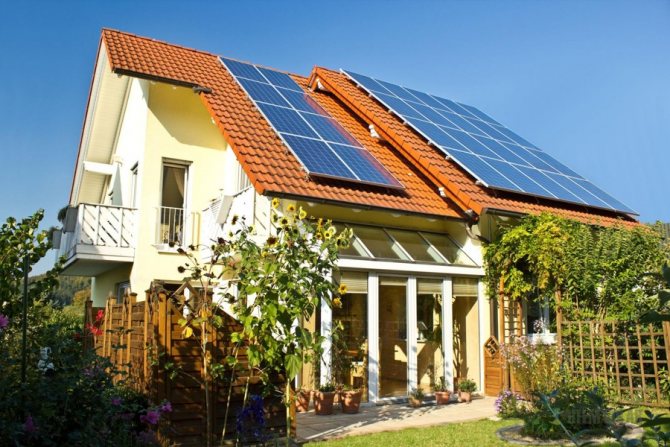

4e5d67ed86018253260bc43e136410ef.jpe
The principle of operation of the installations is as follows:
- The generators of electricity in solar panels are models that capture solar energy. They work on the basis of photoelectric reactions and generate current according to the principle of emission of heated bodies;
- the panels are made on the basis of silicon. The efficiency of a single panel is approximately 30 percent at 300 watts. And in order to get the best result, several dozen elements are combined in chains, thanks to which the installations are able to operate in medium cloudiness;
- In order for the temperature in a house with an area of 30 square meters to be comfortable throughout the year, the total area of the modules must be at least 100 square meters, and batteries and distribution equipment must be installed in the house itself. Judging by the reviews of the owners of private houses, this is one of the most difficult conditions for installing solar panels.
Myth 2: "Any shadow interferes with work"
The next myth says that solar panels do not generate electricity in cloudy weather or in winter and can only be used in clear weather.
Of course, solar collectors show the peak of their activity only when the sun is at its zenith in cloudless weather, but this does not mean that they will not generate energy when the sun is hidden behind the clouds, the batteries will simply not work in full.
But a complete stop occurs only at night, when there is no LIGHT. Even the light from a light bulb can make a solar panel work.
How it works?
Solar cells are composed of silicon wafers. When photons of light hit the crystal lattice of this material, some of the electrons start to move. And from the school physics course, we know that the movement of electrons in a conductor is electricity.
The total energy emitted by the sun in all directions is approximately 385 billion MWh. For every square meter of the surface of this relatively small star, there are more than 63 kW. But, having overcome 150 million kilometers to the ground, the photon beam is fairly scattered and at the equator in clear weather, at noon, the light power is about 1 kV per 1 square meter.
Varieties of solar panels for a private house: characteristics
For a solar cell to be effective, it is necessary to select equipment whose design is suitable for a specific region and climate. In total, there are 3 main types of solar panels. They differ in the structure of the work surface.
Types of solar panels:
- Thin-film;
- Monocrystalline;
- Polycrystalline.
The thin-film version has amorphous silicon in its structure. These are relatively inexpensive batteries, but not common on the market. Such panels consist of a thin stretched film that is strong enough. So the structure is not afraid of dust, and under unfavorable conditions, the work efficiency is reduced by only 20%. But their installation requires a large area.


Monocrystalline silicon is used for monocrystalline panels. These are the most efficient designs, but quite expensive. Panels are produced by cooling the silicon melt. As a result, an ingot is created on one side, even, and on the other, it is divided into honeycombs.
Monocrystalline solar cells are often found on watercraft. They are resistant to moisture. Such structures are mounted on the roofs of houses in places where there is a lot of sun.
Among the advantages of these panels are low weight, compactness and durability. The batteries are easy to install and flexible enough. But the work of the structure requires a lot of solar energy and in cloudy weather the operation of the devices is impossible.
Polycrystalline batteries are made from suitable silicon. In their manufacture, the technology of crystallization of centers in the ingot is used. Plates are processed in the same way as in the previous version, but the indicators of electrical engineering will be higher.
In appearance, the batteries differ in colored parts. Crystals shimmer with a bright blue tint. Such designs are used in any public institution and just for street lighting.
